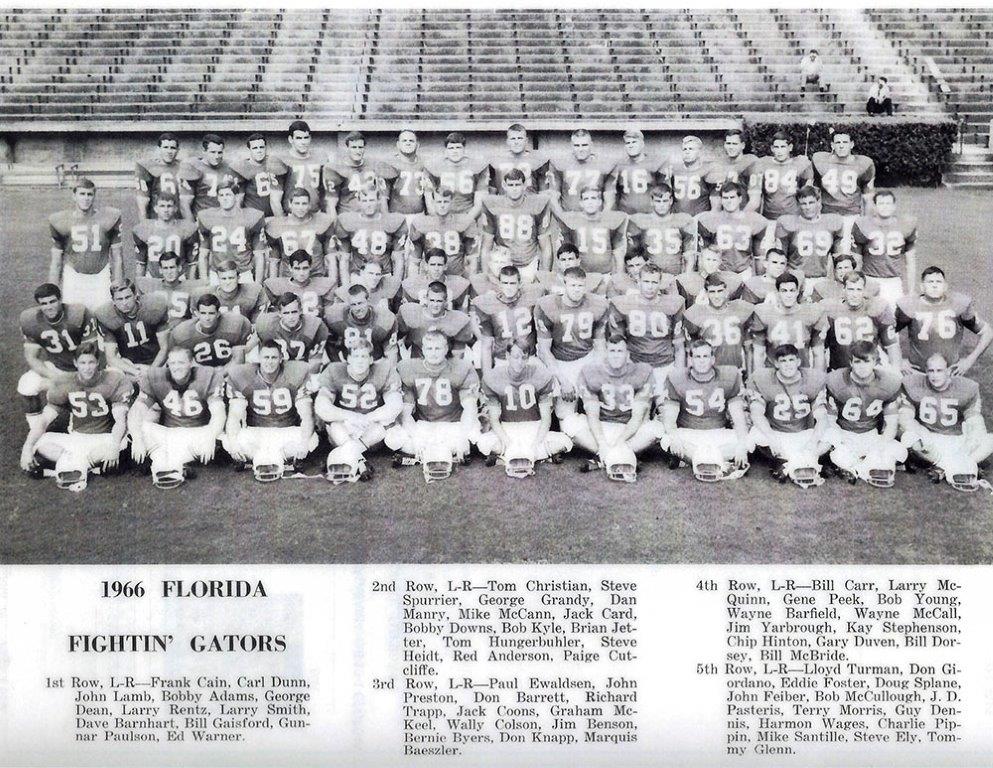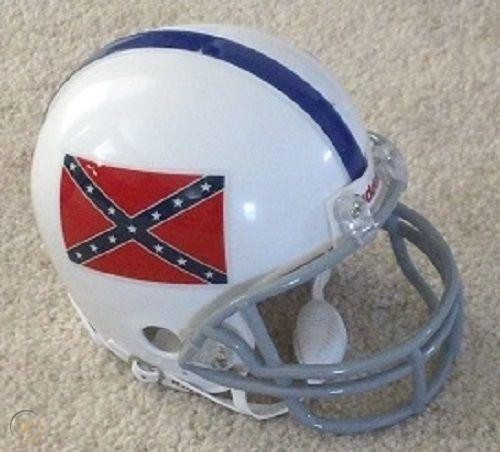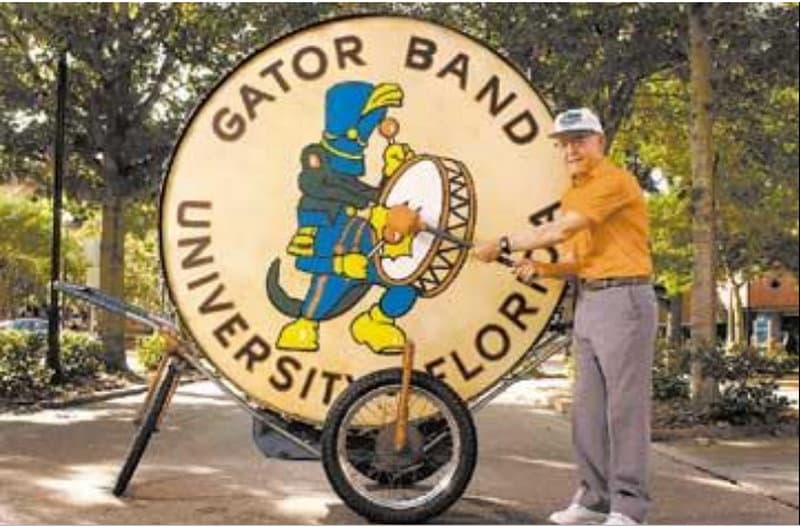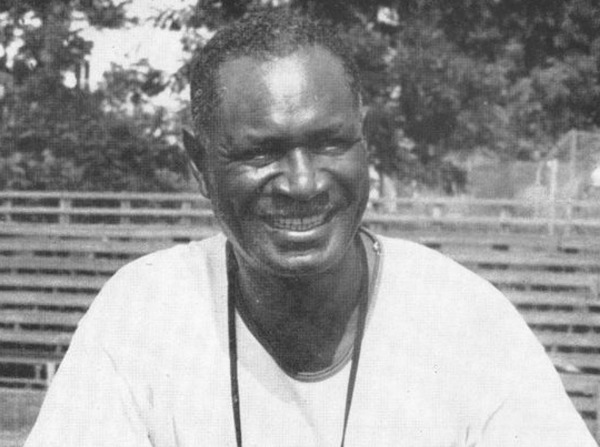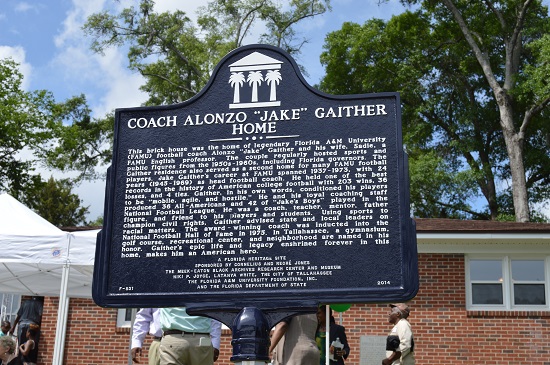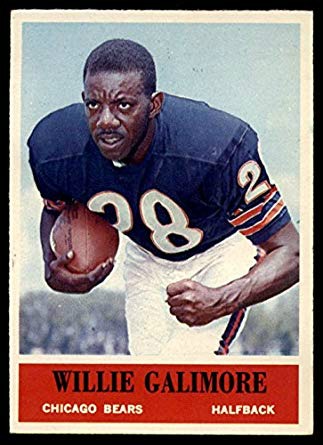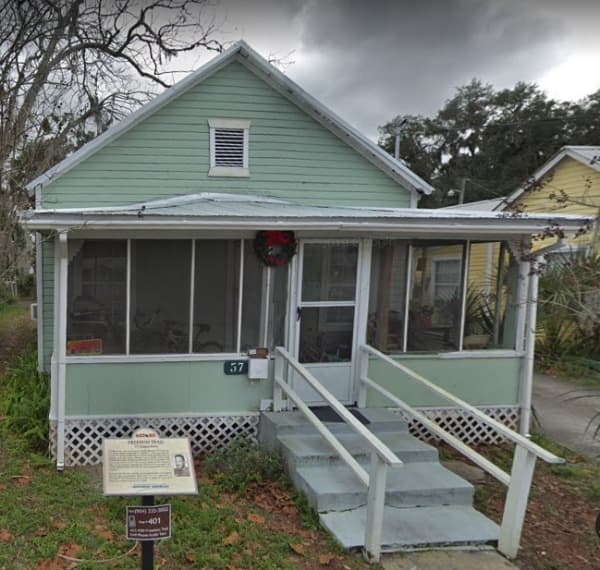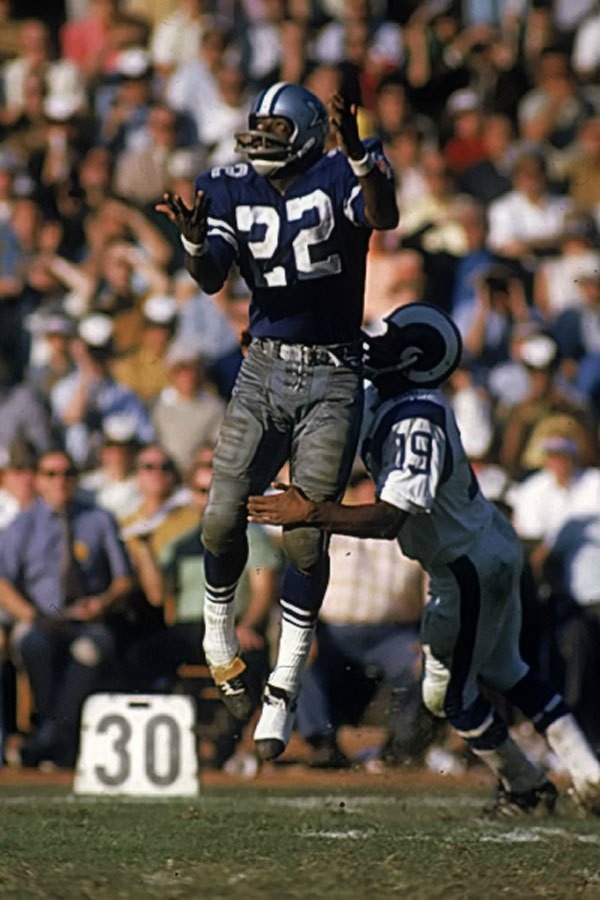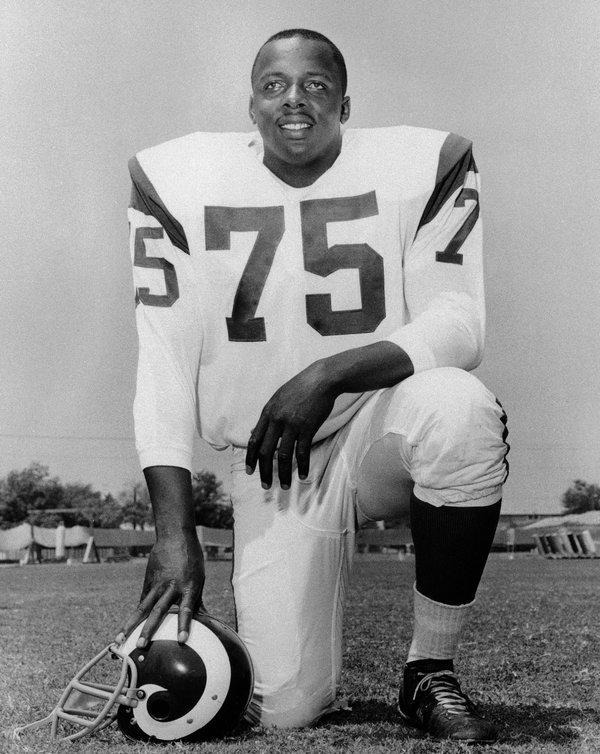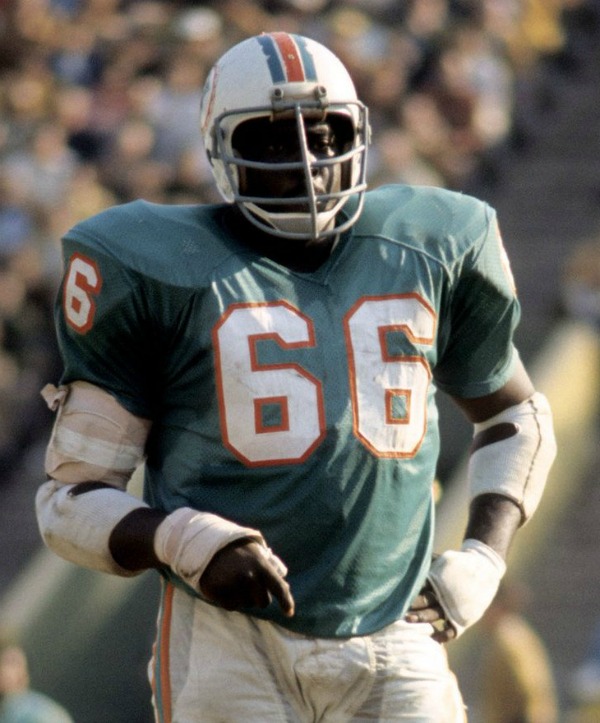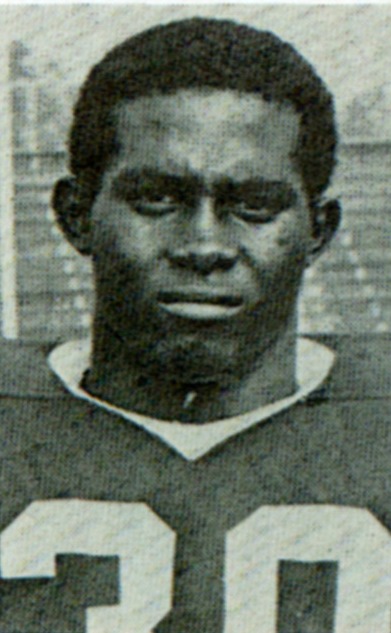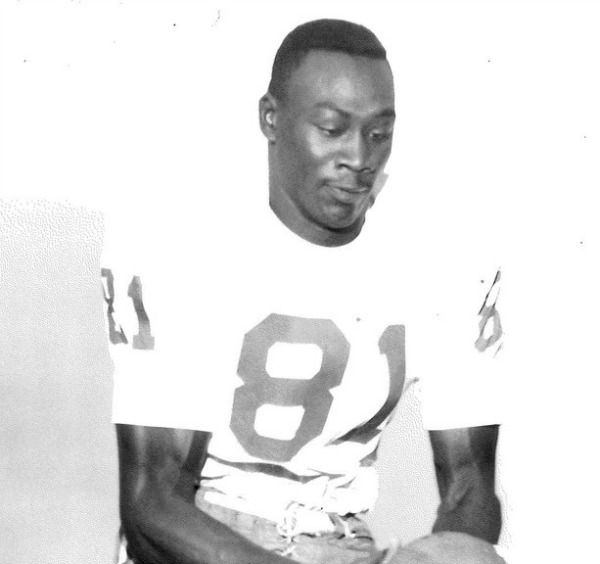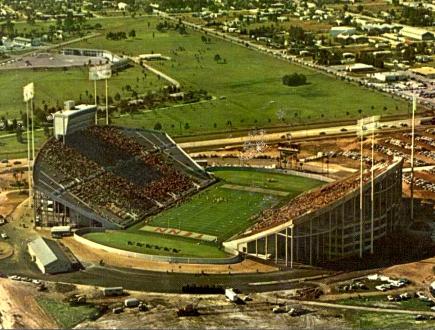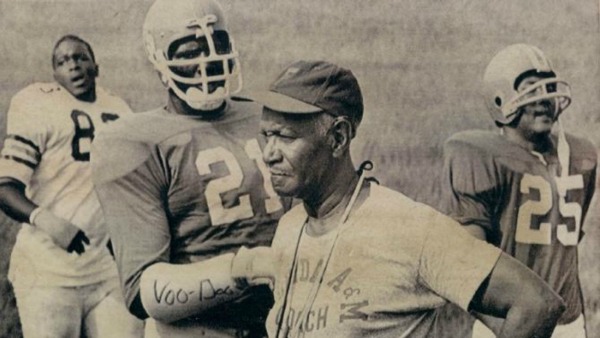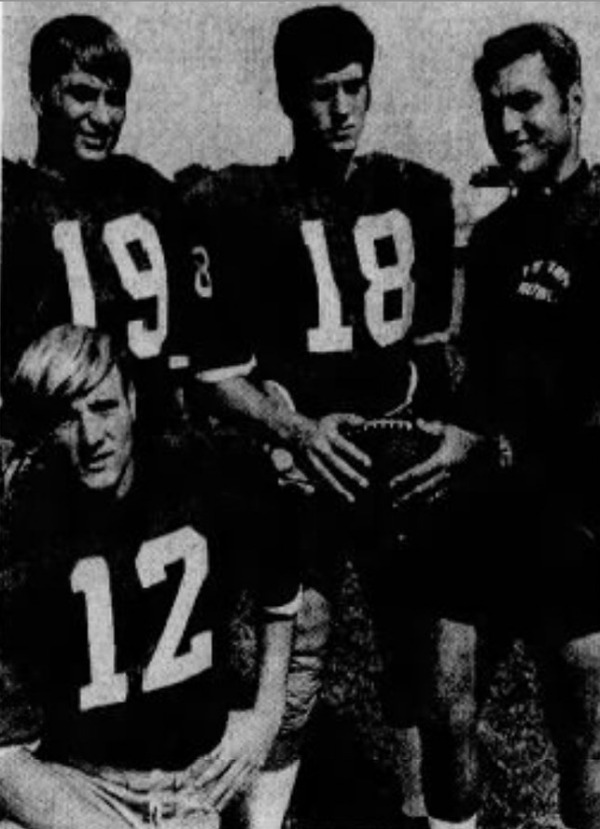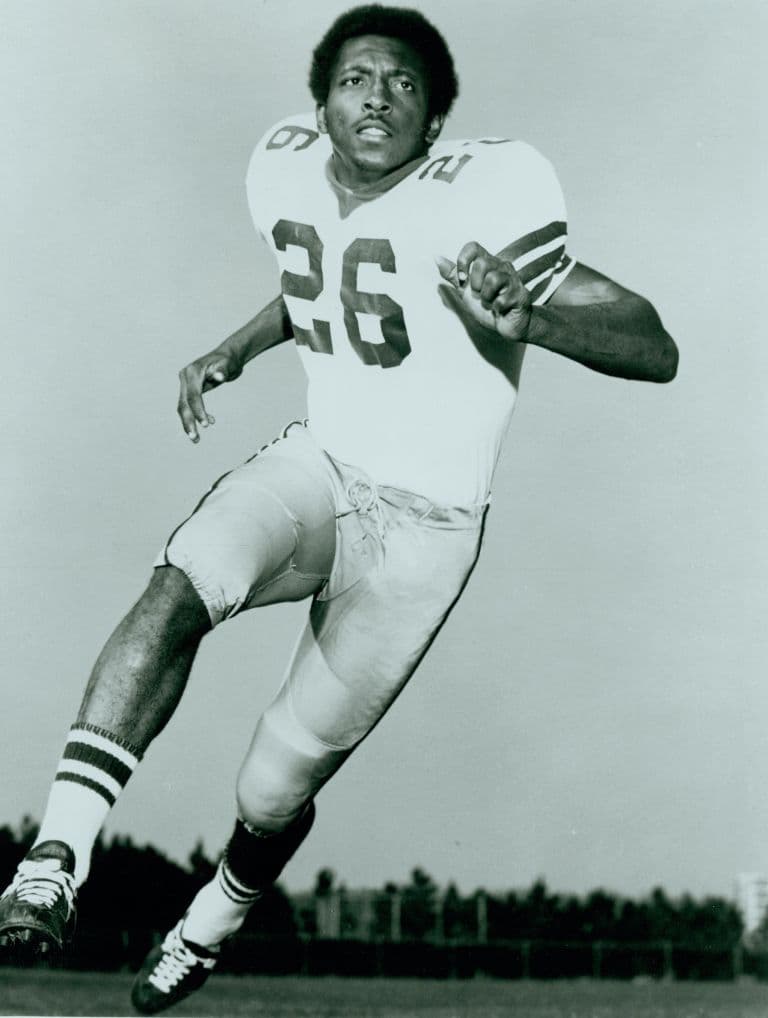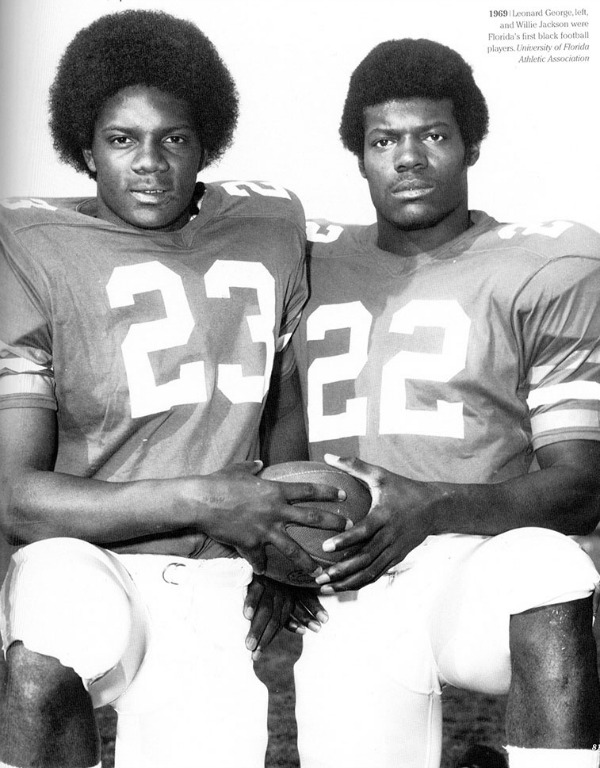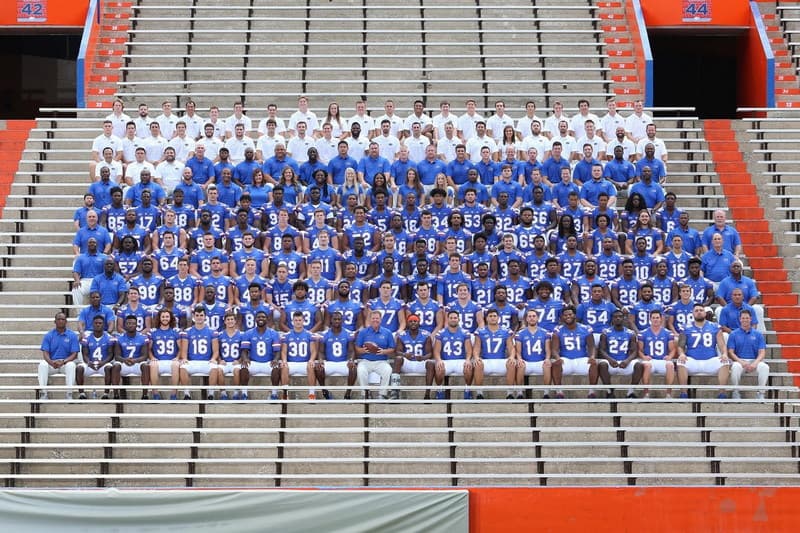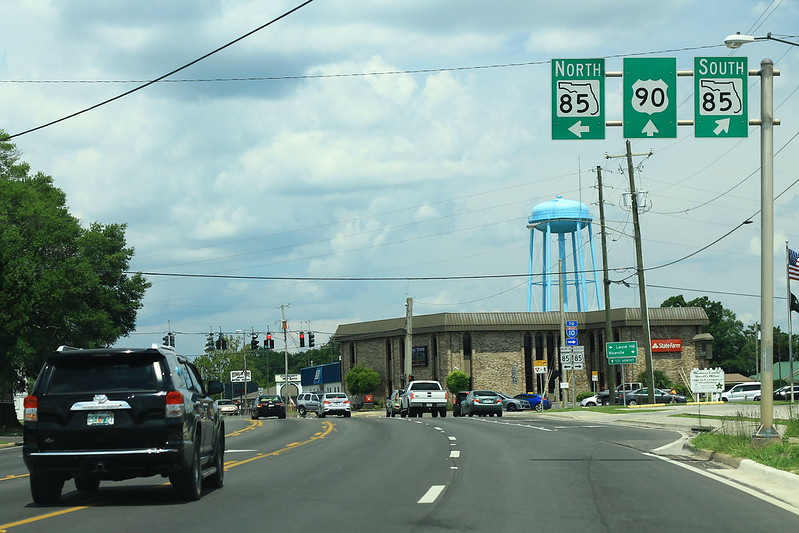FLORIDA BLACK FOOTBALL PIONEERS
By Mike Miller Updated February 1, 2025
In our modern era there are so many black athletes competing in high school, college, and professional sports that we often overlook a sad time in our past.
Many people watching high school and college football games in Florida today don't realize that segregation was the norm in the state until well into the 1960s. Florida had 42 segregated high schools for blacks only.
None of the big southern football schools had blacks on their teams, and would not play teams that had black players. That was the law in most Southern states. Think Florida, Alabama, Georgia, Mississippi, Florida State, LSU, and dozens more.
The photo above is the all white 1966 University of Florida football team. Most of these young men were not racists; that's just the way the culture was in Florida and most of the South back then.
Although this was a great team, the players would have gladly accepted any black player who could help the team be even better.
Black football players could only compete on black high school and college teams under the Jim Crow laws and attitudes that existed in the southern states until well after the Civil Rights Act of 1964.
The underdog Florida Gators upset Penn State in the 1962 Gator Bowl 17-7. The Gators felt this was a big game between Southern and Northern teams, and replaced their usual "F" on their helmets with a Confederate battle flag.
The biggest universities in the state had no black players, including the University of Florida, Florida State University, and the University of Miami.
Black players who wanted to stay in the state played football at Florida A&M University, Bethune-Cookman College, and Edward Waters College.
Those colleges played other predominately black colleges in the South such as Grambling, Tennessee State, Alcorn State, and Prairie View A&M.
Some talented Southern black football players were recruited by northern universities and were given scholarships and played against other northern teams.
Big Ten conference coaches recruited many of them, especially Duffy Daugherty of Michigan State University.
His national championship teams of 1965 and 1966 included 19 black players from the South.
This page celebrates some of the pioneers who led the way to giving black players in Florida the chance to play wherever their talents took them.
JAKE GAITHER
JAKE GAITHER, whose full name was Alonzo "Jake" Gaither, was the head football coach at predominately black Florida A & M University from 1945 to 1969.
His record of 204 wins, 36 losses, and 4 ties is one of the best of any coach in college football history.
He is known for saying he wanted his players to be "mobile, agile, and hostile". He rhymed those words with style, and Jake had plenty of that.
This school was the only one in the state university system that allowed blacks to play on their sports teams. Coach Gaither developed many players who went on to successful pro careers.
More than 60 Florida A & M football players have made it to the National Football League.
He also held out hope that he would someday be allowed to coach Florida A&M against a white dominated university team. He finally realized that dream in 1969, his last year of coaching.
WILLIE GALLIMORE
WILLIE GALIMORE was born in St. Augustine in 1935 and attended Florida A&M, playing football under Coach Jake Gaither.
He was drafted by the Chicago Bears of the NFL in 1956, and played for the Bears from 1957 to 1963.
Willie died at the age of 29 in a car crash. The Bears retired his No. 28 jersey in honor of his career.
Shortly before his death he participated in the civil rights movement in his hometown of St. Augustine, including being the first black person to ever register at the previously all white Ponce de Leon Motor Lodge.
Willie's civil rights activism has been honored by a Freedom Trail marker at his boyhood home.
The home is located at 57 Chapin Street in St. Augustine.
If Willie had lived and played in the NFL a bit longer, he almost certainly would now be in the Pro Football Hall of Fame.
Some of his football opponents swore he could run faster sideways than most players could straight ahead.
As it is, he is in the College Football Hall of Fame.
Enjoy this old video of Willie in action playing for the Chicago Bears.
ROBERT LEE "BULLET BOB" HAYES
BOB HAYES, whose full name was Robert Lee "Bullet Bob" Hayes played football at segregated Matthew Gilbert High School in Jacksonville.
He was highly recruited by colleges up north but took a scholarship at Florida A&M. There he was a star in track and field as well as football.
He broke the world record for the 100 yard dash (9.1 seconds) and was chosen to represent the USA in the 1964 Olympics.
Coach Jake Gaither was not enthused about giving him time off from football for the Olympics, but President Lyndon Johnson called the coach and got him to change his mind.
After winning gold medals in the Olympics, he was selected while still in college by the Dallas Cowboys in the 1964 NFL draft. He proceeded to have a successful career with the Cowboys.
He was so fast that special defenses had to be developed to keep him from scoring on almost every play. He was known in his time as "The Fastest Man in the World".
Bob Hayes was inducted into the Pro Football Hall of Fame in 2009.
DAVID D. "DEACON" JONES
DEACON JONES, whose full name was David D. "Deacon" Jones, was born in 1938 in Eatonville, Florida, a small town north of Orlando. He played football, baseball, and basketball at Hungerford High School in Eatonville.
He went on to have a successful college football career at Mississippi Vocational College. He was drafted into the NFL by the Los Angeles Rams in 1961, and quickly developed into one of the "Fearsome Foursome".
This group is considered to be one of the best defensive lines in football history. His team mates were Lamar Lundy, Roosevelt Grier, and Merlin Olsen.
Deacon is credited with inventing the term "sacking the quarterback", and he was very good at it.
Deacon's football career was one of the best in history, and he was inducted into the Pro Football Hall of Fame in 1980.
LARRY LITTLE
LARRY LITTLE played football at Booker T. Washington High School in Miami. He went on to play college football at Bethune-Cookman University in Daytona Beach.
He was not drafted by the NFL in 1967, but signed as a free agent with the San Diego Chargers. In 1969 he was traded to the Miami Dolphins where he had a stellar career from 1969 to 1980.
He was a ferocious blocker at the guard position, clearing the way for Dolphin runners such as Larry Csonka, Mercury Morris, and Jim Kiick.
Larry was on the famous undefeated 1972 Miami Dolphin team whose record remains unbroken.
After his playing days ended he became a successful coach at Bethune-Cookman, other colleges, and pro teams.
He was inducted into the Pro Football Hall of Fame in 1993.
CALVIN PATTERSON went to Palmetto High School in Miami.
He was one of the first black football players at Palmetto in 1965.
In 1968, he received a scholarship from Florida State University and became the first black football player in the history of that school.
He had a troubled career at Florida State, and received death threats from both fans and opponents.
To make things worse, his grades suffered and he was declared academically ineligible.
His life ended at the age of 22 from a self-inflicted gunshot wound.
Although Patterson never played in a single football game for the Seminoles, he was a pioneer and a trailblazer in troubled times and should be remembered.
RAY BELLAMY was a star in football, basketball, and track at Memorial High School in Palmetto, Florida.
He became the first black football player at the University of Miami when he was awarded a full scholarship in 1967.
He chose the Hurricanes over other schools that offered him scholarships including Florida, Florida State, Nebraska, and Indiana.
Although he set many school records at Miami, his career was cut short by a serious automobile accident in 1970.
He went on to become the first black student body president at the University of Miami, and has had a successful career in management and academics.
THE FOOTBALL GAME THAT CHANGED THE SOUTH FOREVER
Florida A&M University versus University of Tampa
November 29, 1969
Florida A&M University vs the University of Tampa was the game that changed it all.
This game was played on November 29, 1969, in the last year of Jake Gaither's coaching career.
It is considered by many to be the one game that led to desegregation of southern football teams.
It was played almost a year before the historic game between the University of Alabama and the University of Southern California that some people credit for breaking the color barrier.
Gaither had never been particularly active in the civil rights movement, and even had friendly relationships with many Florida segregationist politicians. In those days you had to go along to get along.
Even so, his goal had always been to have Florida A&M play against a mostly white team.
Florida politicians were afraid such a game would lead to race riots, and resisted the idea. When they finally did give permission in the late 1960s it was verbal.
That way they could blame Gaither if a riot resulted from the game since nothing was in writing.
After searching for a couple of years, Gaither finally found a white coach who was willing to take the perceived risk: Fran Curci of the University of Tampa.
Tampa was playing big time Division One football teams in those days, and had a reputation as giant killers. They were not afraid to play anybody.
The game was played in the new Tampa Stadium in front of a racially mixed crowd of 45,000. There were no fights, trash talking, and certainly no riots.
It was an exciting game that Florida A&M won 34 to 28.
The fans of both teams were strangely quiet as they filed out of the stadium. All of us who were there had a feeling that something historic and life changing had just happened.
It was true. From this game on, the racial barriers to playing football in the South started tumbling down.
FRAN CURCI was the University of Tampa head football coach for the famous game against Florida A&M.
Curci, who was born in Pennsylvania, had been an All-American quarterback at the University of Miami.
He took the Tampa coaching job on the condition he could desegregate the team.
He admired Jake Gaither, and was willing to play Florida A&M when other teams would not.
He considered the game to be good publicity for his football program.
Even though Tampa had a few black players, the game was still largely white players versus black.
A lot was riding on the game because if Florida A&M put up a respectable showing, it would show the country that football in black colleges was on a par with football in any school.
After Florida A&M beat his team, Curci made a point of telling sports writers and interviewers that he had been out coached by Jake Gaither, and his team outplayed by the A&M players.
His attitude and statements went a long way toward opening southern college doors to black athletes.
J. T. THOMAS was awarded a full ride scholarship to Florida State University in 1970.
Unlike the tragically short career and life of Calvin Patterson, Thomas thrived at FSU as a student and football player.
He became FSU's first black All-American player, and was selected as the No. 1 draft choice by the Pittsurgh Steelers in 1973.
Thomas played with the Steelers for 11 seasons and was selected for the Pro Bowl and also played in 4 winning Super Bowl games.
After his football career was over, he became a successful businessman and owned several restaurants.
WILLIE JACKSON SR.
LEONARD GEORGE.
The first black players at the University of Florida were given full ride athletic scholarships in 1968.
Leonard George signed his scholarship offer on December 17, 1968. Willie Jackson signed his one day later.
Leonard therefore became the first black football player to receive a scholarship at UF - by one day.
Willie became the first black to play in a University of Florida football game.
It was in 1970, and he received his share of taunts and catcalls not only from the opponent's fans, but from his own.
He handled all of this with class and grace and had a fine three year career with the Gators.
He has two sons who also played for the Gators: Willie Jackson, Jr. and Terry Jackson. Willie Sr., Willie Jr., and Terry all wore jersey No. 22 during their Gator careers.
As of 2025, he also has a grandson playing for the Gators: Kahleil Jackson is a wide receiver for the team who also wears No. 22.
Leonard George also played in most games at UF during his career.
He became the first black player ever to score a touchdown against Alabama in Tuscaloosa. Later he became a defensive back for the Gators in his junior and senior years.
Football in the United States is a meritocracy. If you are good and try hard, you may succeed.
Or you may not. But at least you were given a chance.
The pioneers profiled on this page helped pave the way for players of all races to show what they can do on the big stages of college and professional football.
Our Facebook page has more than 130,800 followers who love off the beaten path Florida: towns, tourist attractions, maps, lodging, food, festivals, scenic road trips, day trips, history, culture, nostalgia, and more.
By Mike Miller, Copyright 2009-2025
Florida-Back-Roads-Travel.com
Florida Back Roads Travel is not affiliated with or endorsed by Backroads, a California-based tour operator which arranges and conducts travel programs throughout the world.
